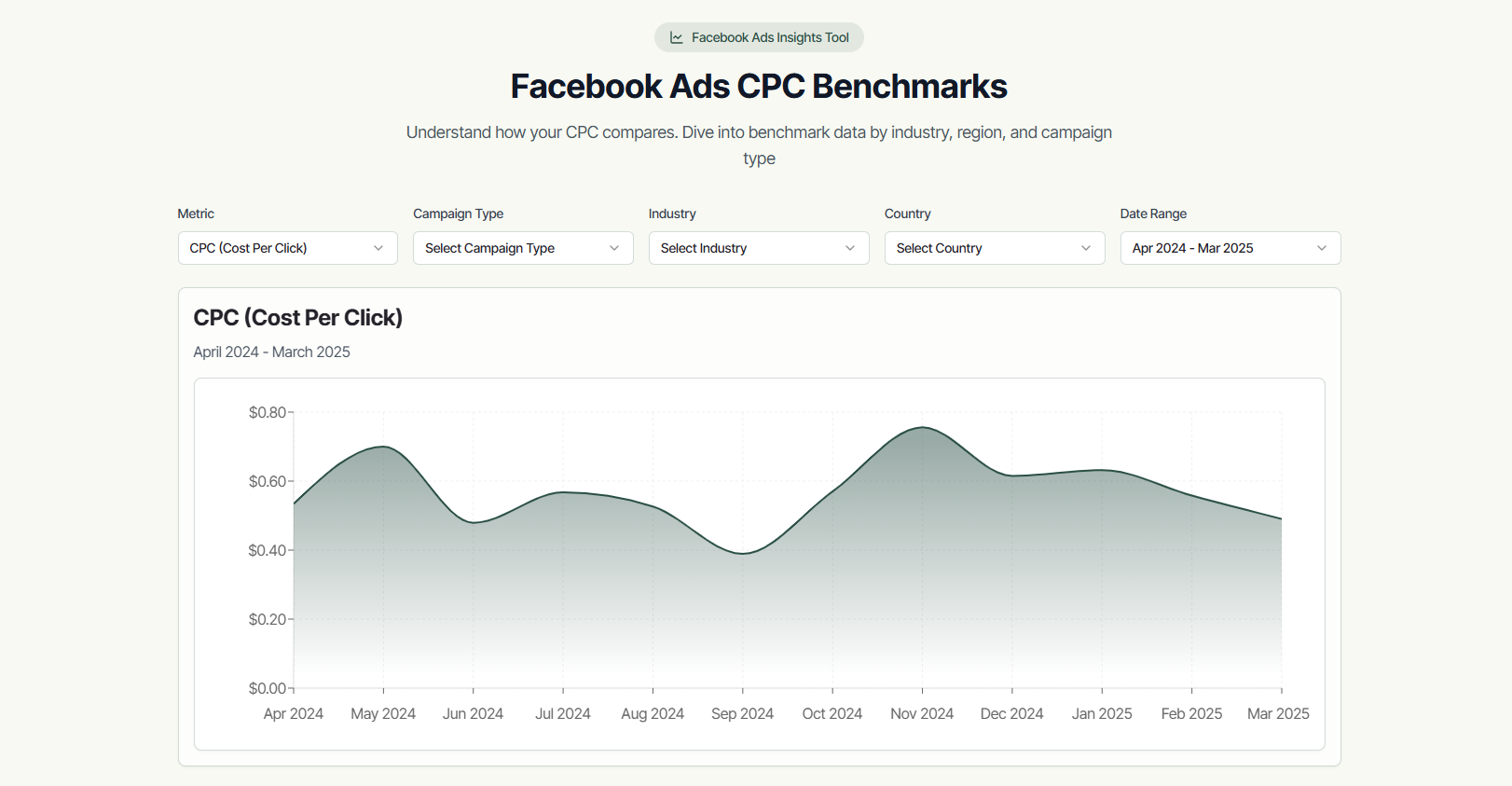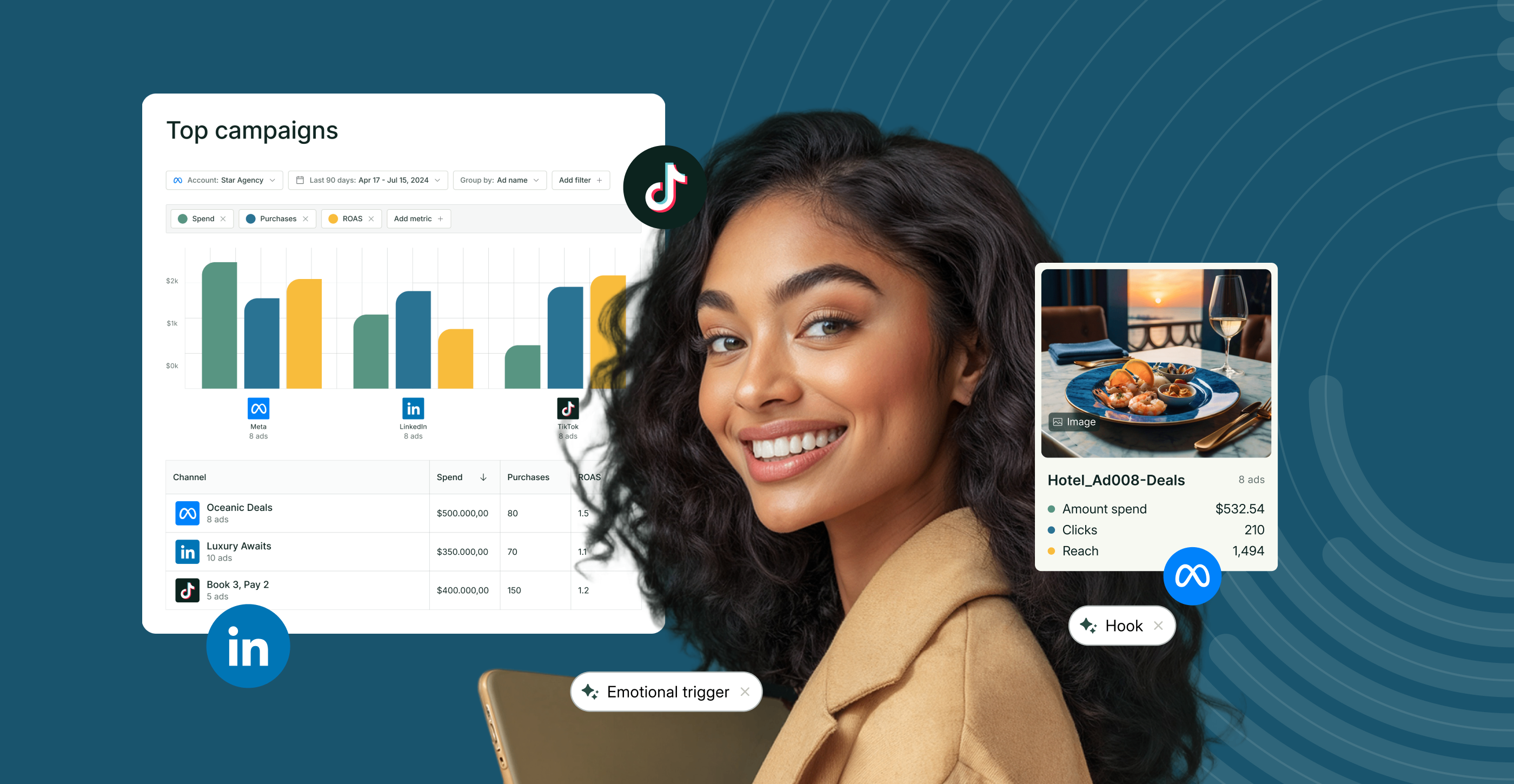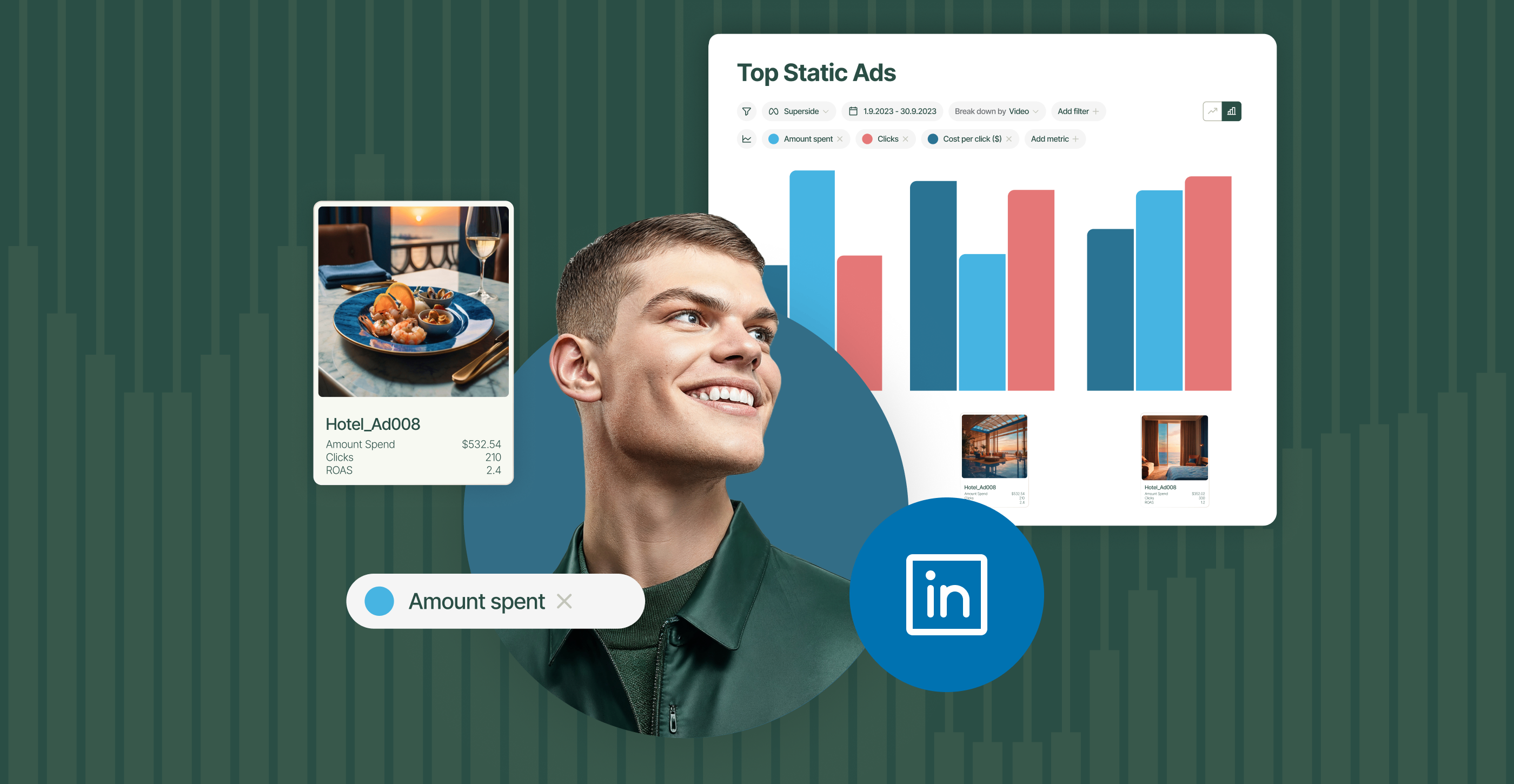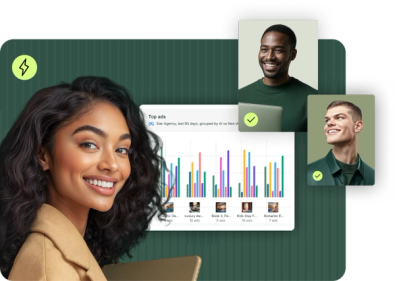The 18 Best Ad Reporting Tools for Streamlined Creative Work


Ad reporting tools are essential for bridging the gap between marketing and creative teams, ensuring all advertising creative is visually impactful and performance-driven.
Still not using one of the many top ad reporting tools on the market? Browse our list of the best ad performance tools to find your fit.
Collaboration between design and marketing teams often reveals tension: Creatives aim for visually compelling, on-brand ads, while marketers focus on hitting those all-important KPIs. Ad reporting tools bridge this gap, connecting metrics with creative insights.
However, accessing and analyzing the data isn’t always easy.
87% of marketers say their companies struggle to use available data effectively. Meanwhile, Hubspot’s 2024 State of Marketing reports that a quarter of marketers face challenges sharing and accessing data across teams, and only 59% feel their tools are correctly integrated.
This disconnect can leave businesses in the dark about their ads’ performance.
Fortunately, top ad performance tools like Superads can significantly impact your marketing strategy and bottom line. Today’s best ad reporting platforms simplify data integration, provide clear visualizations to highlight trends and act as a single source of truth to inform your marketing strategy.
Find the perfect fit with this list of the world’s 18 top ad reporting tools.
Finding an Ad Reporting Tool Based on Your Needs
Not all ad performance tools are created equal. This is why it’s key to define your goals upfront and look for the best reporting tools to meet your specific needs.
Keep these key points in mind when selecting your ideal ad reporting platform:
- Define your marketing goals. Start by identifying what you need from your chosen marketing reporting tool. These goals might be relatively simple, like tracking impressions and CTR, or more complex. For instance, you might want to integrate multiple data streams from various channels and platforms. Your chosen tool needs to align with your overall strategy.
- Check for integrations. Look for ad reporting platforms that integrate seamlessly with your advertising and marketing channels. Some tools only collate data from the most commonly used platforms, such as Google Ads or Meta, while others offer a wide range of options. The better your integrations, the less manual work you’ll have to do, and the more accurately you can assess overall campaign performance.
- Focus on visualization capabilities. Look for tools with customizable dashboards and intuitive visualization options that everyone can understand. Generating a massive spreadsheet is all good and well, but drawing insights from here can be a nightmare. The most valuable tools are those that can accurately pull data into an instantly readable, shareable graph or visualization so everyone can assess how effective each ad is and why.
- Evaluate ease of use. Opt for a tool with a user-friendly interface and straightforward onboarding process. The marketing world moves fast, and you can’t afford a months-long learning curve if you need to generate actionable data for tomorrow’s board meeting.
- Set a budget. Determine your budget and weigh the tool’s features against its cost. Some tools offer scalable pricing models, making them more adaptable to growing teams and businesses. A few free tools are also capable of meeting basic ad reporting needs.
Goodbye, spreadsheets. Hello, creative analytics
If you’re feeling overwhelmed by choices, Superads is the perfect collaborative ad reporting tool for getting your marketing and creative teams on the same page.
Superads is packed with powerful, data-rich features designed to support collaboration between team members, enhance performance creative tracking and provide actionable insights for better ad campaign outcomes.
When you sign up for Superads, you get:
- A free powerful plan (the best in the market) covering over 10+ reports, unlimited users and free automated ad reporting from LinkedIn, Meta and TikTok Ads
- When you upgrade to Professional, report creation becomes unlimited
- Multi-account dimension analysis for optimized campaigns across channels and clients
- 15+ Meta Ads and dynamic breakdown dimensions to segment with precision and find practical insights for each asset
- 5+ Fully customizable, adaptive chart options including gallery view and infinite boards containing multiple, cross-channel reports—and not just a snapshot of how your ads look like
- Dynamic, easy-to-understand reports you can share with Creative or Marketing to optimize better campaigns
- AI Copilot support to generate specific results (beta)
- And much more
Compare us with other ad reporting tools, and see all the value, time and money we'll help you save from day one.
Sign up today and convert more with your creative using Supeards.
Direct Benefits of Using an Ad Reporting Tool
Managing multiple accounts and campaigns simultaneously is a headache. Fortunately, today’s top ad reporting tools simplify data analysis, helping you to improve collaboration processes, measure ad efectiveness and achieve better results faster.
According to Hubspot, 93% of marketers find having a single source of truth for data hugely beneficial. However, only 1 in 4 report that their marketing data is fully integrated with the software they use.
A state-of-the-art creative ad reporting tool can address these and other common challenges in several ways:
The Best 18 Ad Reporting Tools for Streamlined Creative Work
Find the perfect ad reporting tool for your team in this best-of-the-best list:
1. Superads by Superside
Superads is the new creative reporting tool for marketers and creatives—and the answer to getting these two teams to see eye to eye.
The tool makes it easy to spot what’s working and what’s not, giving you accurate insights into how your ad creative performs across multiple social channels.
Superads’ intuitive interface makes it easy to build and share ad creative reports in an instant, ensuring that both creative and marketing performance teams have quick access to the data they need.
It offers features like customizable dashboards, and AI-driven dimension analysis (beta) to streamline collaboration and enhance campaign effectiveness.
Superads offers the most generous free plan in the industry. Unlimited ad accounts, unlimited users. All the core features.
You can create customizable dashboards and get a good understanding of your creative performance that you can share with multiple teams to adjust, adapt and iterate strategies for better outcomes.

Unlike most of the tools in this list, Superads can connect unlimited ad accounts from the biggest paid social platforms like Meta, LinkedIn and TikTok without intermediary tools. Superads also provides unlimited, fully customizable visualization boards from each channel so you can plan and act accordingly.
Don’t keep up with graphs and tables only: Watch what really triggers your creative to perform.
If you’re an agency, we adapt to your client’s needs and deliver multi-account reporting analysis, enhanced by AI, that helps you reach marketing and brand
Besides offering standard ad performance metrics, Superads can analyze winning ad attributes like themes, imagery types, CTAs and copy styles. Automated report updates save you time and effort every day, letting you always know how your campaigns are performing.
Best for: Performance marketers, creative directors, design teams, marketing stakeholders, and marketing agencies managing multiple customers and several omnichannel ad campaigns.
Pricing: Free, powerful, permanent plan.
Custom prices for agencies are also available.
Professional plan starting at $49/month. 30-day trial available now.
2. Google Analytics 4
(Source: Google Analytics)
Google Analytics is one of the best-known and most widely-used ad reporting tools for good reason. It offers state-of-the-art web analytics to monitor and assess the effectiveness of ad campaigns, seamlessly drawing on massive datasets that include everything from web traffic, visitor counts and user interactions to conversions and audience demographics.
GA4 (the latest version) uses event tracking rather than user tracking, which means the tool can accurately track complex interactions across various platforms and sites. This functionality is critical in a mobile-first digital landscape marked by fragmented user journeys.
Best for: Businesses of all sizes, although the free version of GA is better suited for smaller and mid-sized companies.
Pricing: Free at the basic tier, with paid options starting at approximately $50,000 annually for larger datasets and more complex capabilities.
Limitations: GA4’s interface is complex and can be a steep learning curve for new users, leading to some complaints about its non-intuitive UX. While its enhanced capabilities make it a powerful tool, it can be challenging to locate what you need. The tool’s historical data import capabilities are also limited.
3. Hubspot Marketing Hub
(Source: HubSpot)
Hubspot is an all-in-one Customer Relationship Management (CRM) platform designed to support businesses through sales, marketing, customer service and operational workflows.
Within the Hubspot ecosystem, Hubspot Marketing Hub includes a powerful analytics tool to track and report on the impact of your advertising and marketing efforts.
Its capabilities include identifying top-performing assets, measuring site performance and traffic, and generating cross-channel marketing reports that make it easy to identify what’s working and what’s not.
Best for: Medium to large enterprises looking for an intuitive, multipurpose marketing tool with robust analytics capabilities.
Pricing: Subscriptions that include reporting capabilities start at $800 monthly, with a $3,000 onboarding fee.
Limitations: Some users have found Hubspot’s integrations limited, noting that it doesn’t scale comfortably as your brand or business grows. The CRM function also has limited features, and its custom reporting dashboards could be more flexible.
4. Adverity
(Source: Adverity)
Adverity pulls data from multiple sources to offer fully integrated ad reporting. It allows users to consolidate all their campaign data in one place, connecting to hundreds of ad platforms, CRMs and other analytics tools.
Its intuitive and beautifully visualized dashboards are a significant benefit for stressed-out marketers working with complex datasets. The tool also offers AI-powered predictive analytics to streamline reporting and give you actionable insights and trends you might otherwise miss.
Best for: Large enterprises seeking sophisticated data analysis of multiple data sources.
Pricing: On request
Limitations: Because Adverity integrates so many different channels, it can be difficult for new users to set up. Unlike many if the competitors on this list, Adverity also doesn’t offer transparent upfront pricing or subscription options.
5. Tableau
(Source: Tableau)
Tableau is a rising favorite in the ad reporting world, thanks to its top-tier data visualizations. Its ability to crunch numbers and display them in easy-to-read graphs and dashboards enables marketers to quickly derive actionable insights.
The platform also offers data-modeling tools such as trends and forecasting, making it powerful for predicting a campaign or advert’s future success. Its intuitive dashboards enable continuous reporting, so you can track your ad success live and adjust your actions accordingly.
Best for: Medium to large enterprises seeking more data-driven advertising and clear visualizations of complex datasets.
Pricing: Tiers start at $35 per user per month and go up to $115 per month for “creator” capabilities.
Limitations: Tableau is one of the market’s more expensive ad reporting tools, which means it may be out of reach for smaller businesses. In some instances, it also requires manual input (e.g., refreshing reports and updating data). In addition, Tableau lacks robust version control capabilities—a hassle if you need to recover previous reports.
6.TapClicks
(Source: TapClicks)
TapClicks allows users to connect to over 6,000 data sources. It offers extensive technical features and all-inclusive reporting and analytics.
One of the tool's key selling points is its iSpionage feature, which lets you perform PPC and SEO competitor analysis alongside your ad reporting. The fact that it consolidates all relevant reporting in one place makes it a good choice for large companies running multiple advertising streams.
Best for: Enterprise customers seeking to analyze vast amounts of advertising data.
Pricing: Basic data consolidation plans start at $99, but you’ll need a Tapanalytics subscription starting from $899 to unlock the tool’s full ad reporting capabilities.
Limitations: While TapClicks is powerful, its usage involves a steep learning curve. The tool can be downright confusing for newcomers. Some users report finding the interface dated or clunky, and it also comes with a hefty price tag.
7. Databox
(Source: Databox)
Databox offers customized metrics that allow you to build ad insight reports tailored to your precise needs.
It includes over 350 templates tailored to specific industries and standard key performance metrics (KPIs). Plus, its reporting tools produce well-designed visualizations that allow you to instantly integrate data from across multiple sources and channels.
Many users praise the platform’s highly intuitive UI and world-class customer support, making this product a good choice for companies new to ad reporting processes and tools.
Best for: Companies seeking intuitive ad reporting interfaces and excellent data visualization capabilities.
Pricing: Different tiers; premium subscription up to $799 per month.
Limitations: Databox focuses on high-level metrics and KPIs. Unfortunately, this means it can lack the depth needed for more complex analysis or granular insights. It’s good at showing you what your ads are doing but not so good at showing you why.
8. Funnel
(Source: Funnel)
Funnel offers data integration across over 500 advertising, analytics and eCommerce platforms, including Google Ads, Facebook Ads and Amazon.
If you’re looking for a tool to help simplify and automate your ad reporting process, this platform is a good choice. It offers a “single source of truth” to measure your campaign performance.
You can set up customized metrics and parameters to get the reporting data you need. Funnel also offers real-time updates so you can keep close track of your ad performance. It’s also easy to export data and use it in visualization tools like Tableau or Looker.
Best for: Medium-sized businesses running multiple ads and campaigns across platforms.
Pricing: Free starter tier, with increased costs depending on your data needs.
Limitations: Funnel has powerful data analysis capabilities, but unlike many competitors, it doesn’t offer native visualization. This means you must export your Funnel data into a visualization tool to easily spot trends.
9. DashThis
(Source: DashThis)
DashThis offers a straightforward solution for marketers looking to visualize their ad data and customize their reporting.
It connects to over 30 marketing platforms, with the ability to add third-party data as needed. It also offers automated reporting, so you can get on with other pressing work while it crunches the numbers in the background.
While DashThis may not be the most sophisticated or feature-rich offering on this list, it’s a good tool to help you get started with more in-depth ad reporting.
Best for: Smaller businesses with basic reporting needs who value ease-of-use over complex features and integrations.
Pricing: Free trial, with subscriptions starting at $42 per month for individual users; up to $382 per month for the highest tier.
Limitations: While DashThis is a great starting point, it doesn’t offer the wealth of integrations of its competitors and has a limited range of visualization types. Given these limitations, users may find the pricing a little steep.
10. AdEspresso
(Source: AdEspresso)
AdEspresso is an easy-to-use ad reporting tool linked to the social media management platform Hootsuite. This makes it a logical choice if you’re already a Hootsuite user.
If you’re just starting to dip your toes into more comprehensive ad reporting, AdEspresso is accessible, fully customizable, and a great addition to your social media advertising toolkit.
It’s particularly useful for social media-focused campaigns, offering cross-platform reporting, audience insights and data-backed suggestions for improving campaign performance.
Best for: Smaller and medium businesses with a social-first advertising strategy
Pricing: Starts at US$49 per month; up to US$259 per month, depending on your subscription tier.
Limitations: AdEspresso only connects to some social platforms, so it may not be suitable for companies that use others. While it’s simple to learn and use, the platform offers limited analytics features and won’t be suited to analyzing more complex, multi-channel campaigns.
11. AdZooma
(Source: AdZooma)
AdZooma combines advertising insights from Google Ads, Facebook Ads and Microsoft Ads in a single dashboard. This functionality makes it easy to see how a campaign is performing across the board. It also offers detailed insights into key metrics such as clicks, impressions, CTR, CPC and conversions.
Unlike some of its competitors, automated reporting is easy to set up. The platform also supports white-label reporting, simplifying the process of setting up customized reports for customers.
Best for: Smaller and mid-size businesses looking for a simple, affordable approach to ad reporting.
Pricing: Basic free tier; $179 for the most comprehensive offering.
Limitations: AdZooma only supports Google, Facebook and Microsoft Ads, restricting its use to companies using platforms like TikTok, LinkedIn or Twitter or for ad types other than PPC. It’s great for accessing essential metrics but lacks some of the more advanced analytics capabilities of its competitors.
12. Wicked Reports
(Source: Wicked Reports)
Wicked Reports is designed to help marketers understand the ROI of their advertising efforts. It offers detailed attribution models with actionable insights, helping you judge how your ads influence customer behavior at different points in the buyer’s journey.
Its customizable dashboards and multi-channel reports include detailed analysis of ad spend versus actual revenue generated. The tool offers this functionality at a more granular level than many of its competitors.
Additionally, the platform can track the long-term value of acquired customers through a specific campaign or channel, making it a great addition to most your ad reporting arsenal.
Best for: Medium to large businesses with a digital advertising focus, especially those looking for detailed insights into ROI across channels and campaigns.
Pricing: Subscriptions start at $500 per month.
Limitations: Wicked Reports can be difficult to set up and use as a result of its complex interface and heavy data demands. It’s best suited to businesses with an eCommerce or subscription model.
13. AdClarity
(Source: AdClarity)
AdClarity offers a slightly different focus than many of the other top ad reporting tools on this list. Instead of giving you detailed insights into your ads, it focuses on your competitors’ activities. This makes it a valuable addition for marketers in highly competitive industries.
AdClarity can analyze competitors’ ad performance data and trends across channels, letting you benchmark your performance and refine your advertising strategies accordingly.
Best for: Large companies in highly competitive industries who need data insights to help their advertising stand out.
Pricing: From $450 per month
Limitations: AdClarity is a robust market insight tool, but it isn’t suited to judging the success of specific ads or campaigns.
14. AdRoll
(Source: AdRoll)
AdRoll is a comprehensive digital marketing platform that includes advanced ad reporting features. It delivers detailed performance metrics insights across channels, including basics like impressions, clicks and conversion rates as well as more complex analytics.
Advanced features include cross-device tracking, real-time updates and behavioral data integration. These capabilities makes it easy to quickly spot where your ads are working (or not).
Best for: Large businesses with complex ad reporting needs
Pricing: On request
Limitations: AdRoll has many powerful features, but its capabilities and dashboards are less customizable than those of some of its competitors. Some users have also reported data discrepancies between AdRoll and other platforms. Our advice? Test the product before you buy.
15. Whatagraph
(Source: Whatagraph)
With over 50 integrations across various marketing platforms, Whatagraph is a powerful, user-friendly tool for data aggregation across campaigns and channels.
It includes advanced visualization capabilities, customizable reporting, automated reports and real-time updates. The platform’s well-designed interface and templates make it a breeze to use and share data.
Best for: Medium to large businesses with multiple advertising streams and channels, especially those who value ease of use and strong data visualization capabilities.
Pricing: On request
Limitations: Whatagraph is relatively costly compared to some of its competitors. The platform also limits the number of metrics it can pull from some integrations, so it may not work as needed for every use case. Do your research well if you have very complex ad reporting needs.
16. NinjaCat
(Source: NinjaCat)
NinjaCat is an end-to-end digital marketing performance management platform that includes tools to centralize data from across standard advertising and social platforms. It offers automated report generation, budget management, performance monitoring and call tracking.
This platform is a good choice for firms managing complicated ad reporting data, including multi-location enterprises running large digital campaigns.
Its sophisticated analysis and customization options include over 150 integrations, letting you consolidate all your data into a single point of truth. Plus, it intelligently uses AI tools to streamline the ad reporting process and make accurate, evidence-based predictions and recommendations.
Best for: Large enterprises with complex, cross-channel data needs.
Pricing: On request
Limitations: NinjaCat is a robust but complex tool. Using it involves a steep learning curve for ad reporting and data analysis newbies. Its pricing may also put it out of reach for smaller businesses.
17. Swydo
(Source: Swydo)
Swydo has perfected the balance between sophisticated customization options and a highly intuitive user interface. This makes it a useful choice for marketers who must generate professional, custom reports with solid data visualizations and design.
Its capabilities include real-time KPI tracking with monitoring and alerts, so you can see at a glance if something is working well or not.
Unlike many of its competitors, this platform also offers multi-language reporting capabilities. This functionality makes it a good option for businesses with a global footprint.
Best for: Medium and large enterprises looking for an easy-to-use, all-in-one ad reporting solution.
Pricing: From US$49 per month, depending on the number of data sources required.
Limitations: Some users have reported difficulty accessing customer support when they run into problems with Swydo. This platform is also one of the more expensive options on this list if you’re working with various data sources and sets.
18. ReportGarden
(Source: ReportGarden)
ReportGarden is an intuitive ad reporting tool tailored for digital marketing agencies. It offers real-time dashboards, automated reporting capabilities and fully customizable templates. And the platform offers a wide range of integrations, including standard offerings such as Google Ads and Facebook Ads.
Its user-friendly UI and drag-and-drop widgets makes it a fun tool to use, even if you’re a complete newbie to ad reporting. It also has good visualization capabilities—a bonus if you’re producing customer-facing presentations.
Best for: Digital marketers and agencies looking for a good customer-facing reporting tool.
Pricing: Basic tier starts at $74 per month.
Limitations: While ReportGarden offers most of the capabilities you need to get started, it may not be the best choice if you seek extensive or detailed ad reporting capabilities.
Superads: 2025’s Top Solution for Ad Creative Reporting
Ad reporting tools are no longer for rinse-and-repeat growth marketing: They’re essential for planning, improving and scaling your ad campaigns to grow your business.
Superads by Superside offers tailored solutions for fast-growing in-house teams and large agencies, combining multichannel reporting, data-driven advice for multiple campaigns and seamless collaboration features in one unbeatable package.
Discover how Superads can transform your ad performance and creative analysis workflows.
Sign up now and experience 10X success on your next campaign.
You may also like these

New: Free Facebook Ads Benchmarks Tool, by Superads
Ever stared at your Facebook Ads dashboard wondering if your $2.75 CPC is brilliant or bleeding money? You're not alone.That's why we built the industry's first comprehensive, public Facebook Ads benchmarking tool at Superads.It's free, it's live and it's based on real data, not some marketer's best guess from 2017.You try it today: It's based on over $2B in anonymized ad spend from thousands of accounts using Superads. All data is fully aggregated and anonymized. No individual account is ever identifiable.
15 LinkedIn ads examples for winning strategies in 2025
Pause momentarily to consider how long B2B marketers have been using LinkedIn for their ad strategies. Would you say a decade? You may be surprised to learn that the first LinkedIn ad appeared two decades ago.If LinkedIn has been part of your advertising strategy in the past 1, 5 or 20 years, you’ll have noticed that its cost-per-click (CPC) is much higher than that of other platforms. This means you must squeeze the most value out of every ad dollar spent to yield those high-value B2B conversions.Get a headstart on your next B2B ad campaign with our round-up of the 15 top LinkedIn ad examples showcasing proven winning strategies. Each example breaks down what makes these paid ads successful and how you can follow suit.The key ingredients of high-performing LinkedIn advertising
7 best ad intelligence tools to supercharge your strategy
In today's hyper-competitive digital landscape, flying blind with your ad strategy isn't just risky: it's often an inefficient use of your marketing budget. Ad intelligence tools have evolved from niche solutions to valuable resources that can significantly enhance your marketing operation's effectiveness.These platforms can help you understand not just what your competitors are doing, but potentially why their strategies are working (or failing), giving you insights to make more informed decisions about your own campaigns. The right tool can help transform your approach from educated guesswork to more data-driven marketing.Let's explore what ad intelligence actually means in 2025, how it might benefit your specific situation, and which platforms could deliver the most value for different types of marketing teams. What is ad intelligence?Ad intelligence is the collection, analysis and use of advertising performance data to help marketers make evidence-based decisions about their campaigns and strategies.


